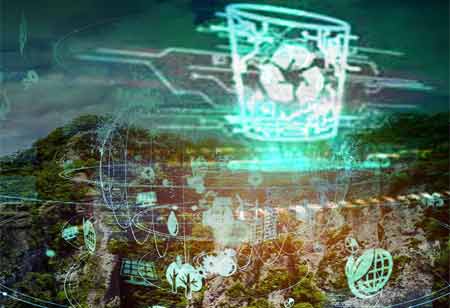Thank you for Subscribing to Agri Business Review Weekly Brief
What Areas Of Farming Are Impacted By Digital Transformation?
Agriculture is essential for long-term growth. It has a wide range of ramifications in terms of food and industrial supply chains, as well as water management.

By
Agri Business Review | Thursday, January 14, 2021
Stay ahead of the industry with exclusive feature stories on the top companies, expert insights and the latest news delivered straight to your inbox. Subscribe today.
The agricultural value chain has the potential to be transformed by digital technologies throughout the crop's lifetime. These technologies can help achieve numerous Sustainable Development Goals (SDGs) around the world if they are applied responsibly at scale.
Fremont, CA: Agriculture is essential for long-term growth. It has a wide range of ramifications in terms of food and industrial supply chains, as well as water management. With the negative effects of climate change and the ever-increasing need for agricultural production, it's critical to use technologies like IoT, AI/ML, mobility, and cloud to boost agricultural throughput. Irrigation optimization, soil condition monitoring, yield estimate, livestock monitoring, and insect identification are all examples of smart agriculture. Device layer technologies have emerged to provide different sensor data inputs across the farm into the device to cloud data pipeline with ultra-low power, frequently battery-free sensing devices.
Here are the areas of farming that are leveraging digital transformation:
Soil monitoring
Precision farming procedures include regular monitoring of soil temperature and humidity to ensure that they remain within the approved range. It's possible to do so with buried sensor probes that provide telemetry data to routers or gateways on the farm. Watering and planting operations are better managed when they are based on current conditions and prior trends. This ensures that there is enough water for plant growth and that water-soluble nutrients in manures and fertilizers are delivered effectively.
Weed and pest detection
Vision technologies on autonomous vehicles, such as drones, are used to determine the percentage of weed coverage on a farm, identify plots that are beyond the threshold, and manage farmed staff to eradicate the weeds accordingly. It's critical to use inputs like water, necessary nutrients in manures, fertilizers, and sunlight to get the most out of the crops.
Livestock monitoring
The precise count and health of the livestock under care are ensured via sensor-based position tracking and geofencing, as well as body vitals (e.g. temperature) monitoring. Hygiene, safety, and overall well-being are all aided by measuring and monitoring ambient conditions in living places.





